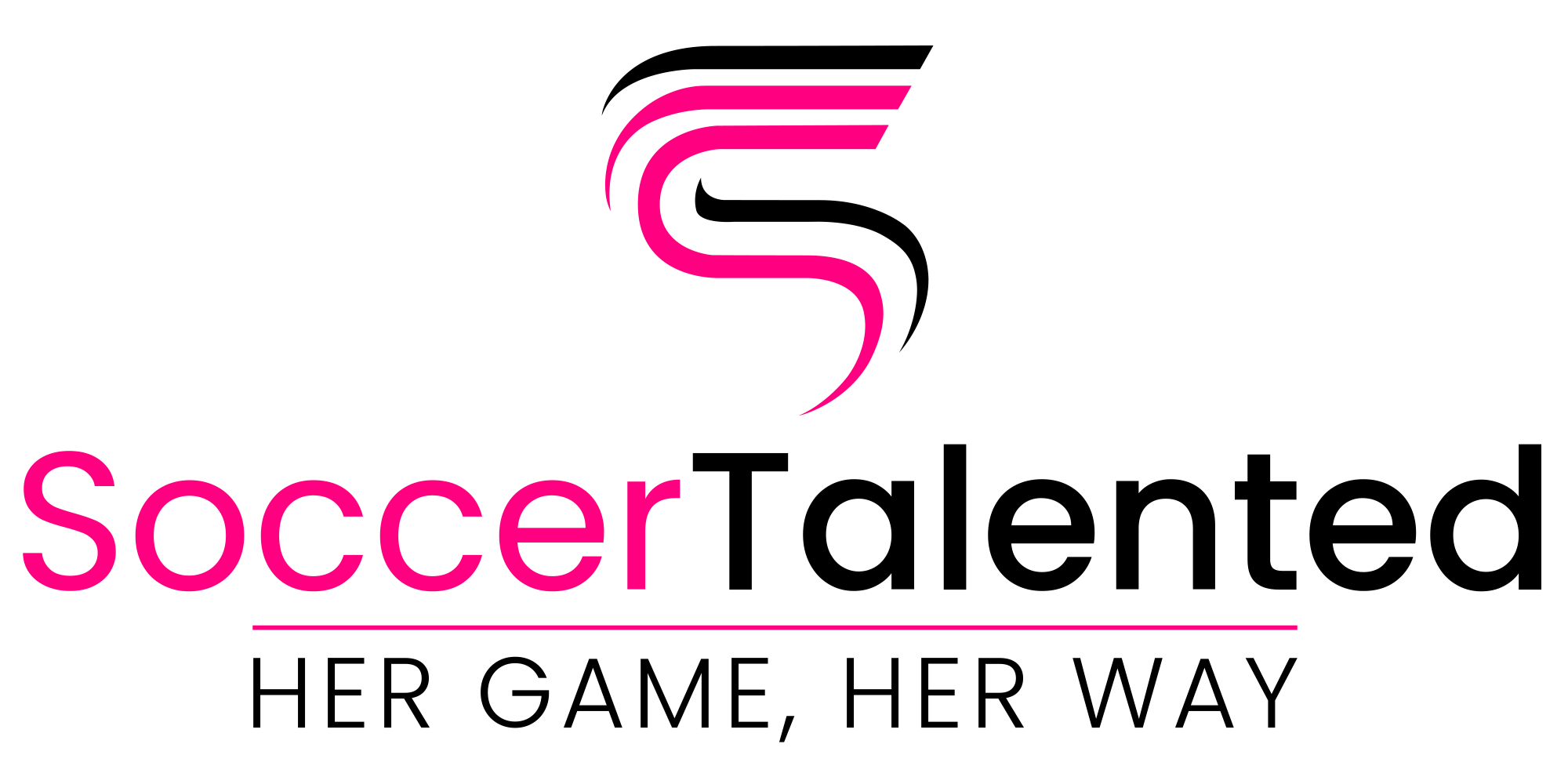Women's Professional Soccer and European Football: A Comparative Overview
The Journey to Professional Soccer Success
Introduction
As women’s sports continue to thrive globally, women’s professional soccer in the US and women’s professional football in Europe have emerged as major players in the sporting landscape. This article delves into the exciting developments, growth, and achievements in these two regions.
From the National Women’s Soccer League (NWSL) in the US to the FA Women’s Super League in England, we explore the evolution of women’s professional soccer and football, highlighting their impact on both players and fans. Let’s embark on a journey that showcases the immense progress and opportunities in women’s sports, inspiring athletes and enthusiasts alike.
Women's Professional Soccer in the US
The National Women’s Soccer League (NWSL) is a remarkable entity in the United States, serving as the premier professional women’s soccer league.
Since its inception in 2013, the NWSL has demonstrated incredible growth in terms of popularity and support, making it one of the most prominent sports leagues in the country.
With franchises located in different regions across the United States, the league has succeeded in fostering a highly dedicated following of fans who are incredibly passionate about the teams and players involved.
Additionally, the NWSL has successfully attracted many significant corporate sponsorships to further fuel its growth and success, which is a testament to the league’s continued importance and relevance in the world of sports.
Overall, the NWSL is a pioneering organization that is steadily raising the bar for women’s professional sports in the United States.
Women's Professional Football in Europe
Women’s professional football has been on the rise in Europe in recent years, with a variety of highly competitive leagues gaining momentum and recognition.
One particularly noteworthy example is the FA Women’s Super League in England, which has attracted a dedicated following and features talented athletes from around the world.
Meanwhile, in France, the Division 1 Féminine has been another standout league, showcasing some of the most skilled players in the sport.
However, the history of women’s football in Europe is actually quite deep, with some nations establishing their own women’s leagues as far back as the 1970s.
This represents a longstanding legacy of supporting and celebrating female athletes, and it’s exciting to see such impressive growth and development in the sport today.
A Platform for Success and Representation
The National Women’s Soccer League, also known as the NWSL, stands for more than just exciting sports competitions.
It is an organization that is devoted to advancing gender equality and representation, providing a vital platform for women’s soccer players in America. The league has partnered with various LGBTQ+ organizations, demonstrating its commitment to inclusivity, diversity, and acceptance.
It has provided a platform that gives women of all backgrounds and orientations an opportunity to showcase their talent on the big stage.
Furthermore, the NWSL has also been instrumental in propelling the growth of the United States women’s national soccer team, offering a supportive environment that fosters excellence and develops future champions.
So not only does NWSL provide thrilling soccer matches, but it also champions social and cultural progress, making it more than just a league but a movement for gender equality.
Increased Exposure and Investment
The popularity of women’s football in Europe has skyrocketed in recent years as a result of many factors.
One of these key factors is the increased attention and coverage the sport has received from media outlets and sponsors alike.
Both traditional broadcast channels and online streaming platforms have recognized the growing demand for the sport and responded by providing fans with far greater access to matches across Europe.
Another contributing factor in the rise of women’s football can be traced to the support provided by top men’s clubs that have begun investing in women’s teams.
These investments not only raise the profile of the sport, but also facilitate crucial player development, infrastructure improvements, and training facilities to propel the sport to new heights.
With all these positive developments, there is no doubt that the future of women’s football in Europe looks brighter than ever!
The Rise of Women’s Pro and Amateur Soccer in the United States
Women’s soccer in the United States has come a long way over the years, experiencing significant growth and development. From limited organized matches in the early years to now being recognized as one of the top countries in the world for women’s soccer, the United States has established itself as a powerhouse in the sport. In this article, we will explore the evolution of women’s soccer in the United States, focusing on the Women’s Premier Soccer League (WPSL), United Women’s Soccer (UWS), and the United States Adult Women’s Soccer Association (USASA).
The Early Years
Until the 1970s, women’s soccer in the United States was only played on a limited basis. Organized matches were scarce, and the sport struggled to gain widespread recognition. However, as the interest in women’s soccer grew, so did the opportunities for women to showcase their skills on the field.
The Women’s Premier Soccer League (WPSL)
Established in 1998, the Women’s Premier Soccer League (WPSL) has played a crucial role in the development of women’s soccer in the United States. The league serves as an amateur platform for highly skilled female players from collegiate, post-collegiate, international, and standout prep athletes. With the aim of providing the highest level of developmental opportunities, the WPSL has become a stepping stone for aspiring professional players.
The WPSL has a strong presence across the United States and Canada, with numerous teams competing in various conferences. Each team consists of talented players who are passionate about the sport and dedicated to honing their skills.
United Women’s Soccer (UWS)
United Women’s Soccer (UWS) is another prominent pro-am league in the United States and Canada. Comprising professionally operated clubs, UWS provides high-level competition for college players, aspiring and former professionals, and international stars.
The league serves as a clear pathway for players between the college and professional ranks, bridging the gap that previously existed.
UWS has gained recognition for its commitment to developing the next generation of women’s talent. The league’s emphasis on both on-field performance and off-field growth has made it an attractive platform for players looking to make their mark in women’s soccer.
The United States Adult Women’s Soccer Association (USASA)
The United States Adult Women’s Soccer Association (USASA) plays a vital role in promoting and supporting adult women’s soccer in the United States. As an affiliate of the United States Soccer Federation (USSF), USASA provides a platform for women of all ages and skill levels to participate in the sport.
USASA works closely with local, state, and regional soccer associations to organize leagues, tournaments, and other events that cater to the specific needs of adult women players. The association’s commitment to inclusivity and fostering a love for the game has helped create a vibrant and diverse soccer community.
The Pathway to Professional Soccer
For many players, the WPSL, UWS, and USASA serve as a crucial stepping stone towards a professional soccer career. These leagues provide a platform for players to showcase their skills, gain exposure, and catch the attention of professional teams. The high level of competition and the opportunity to play alongside talented teammates further enhance the development of players.
Advancements in Infrastructure and Support
Over the years, there have been significant advancements in infrastructure and support for women’s soccer in the United States. The establishment of professional leagues, such as the National Women’s Soccer League (NWSL), has provided a platform for players to compete at the highest level domestically.
The NWSL, which succeeded the Women’s Professional Soccer (WPS), has seen steady growth in terms of teams and fan support.
Additionally, increased media coverage, sponsorships, and investments in women’s soccer have contributed to the growth of the sport. Major brands have recognized the potential of women’s soccer and have aligned themselves with teams and players, further propelling the sport’s popularity.
The Impact on Youth Soccer
The success and growth of women’s pro and amateur soccer in the United States have had a significant impact on youth soccer. As young players witness the achievements of their role models on the field, their passion for the sport grows. The presence of professional leagues and opportunities for development at the grassroots level have inspired a new generation of young girls to pursue soccer as a serious athletic endeavor.
Looking Ahead
The future of women’s pro and amateur soccer in the United States looks promising. With the continued support and investment in the sport, there is immense potential for further growth and development. The success of leagues like the WPSL, UWS, and USASA, coupled with the rise of professional leagues like the NWSL, has created a strong foundation for women’s soccer in the country.
As more opportunities arise and the sport continues to gain recognition, women’s soccer in the United States will undoubtedly reach new heights. The dedication and talent of the players, combined with the support of fans and organizations, will drive the sport forward and inspire generations to come.
Conclusion
Women’s pro and amateur soccer in the United States has experienced significant growth and development over the years. The WPSL, UWS, and USASA have played crucial roles in providing opportunities for talented female players to showcase their skills and pursue their dreams. With the continued support and investment in the sport, the future looks bright for women’s soccer in the United States. As more players emerge, infrastructure improves, and the sport gains popularity, the United States will solidify its place as a global powerhouse in women’s soccer.
Professional Leagues in the United States
The National Women’s Soccer League (NWSL)
The National Women’s Soccer League (NWSL) is the highest level of professional women’s soccer in the United States. Established in 2012, the NWSL has become a vital platform for elite female athletes to compete at the highest level. Initially run by the United States Soccer Federation (USSF), the league gained independence in 2020. The NWSL currently consists of 12 teams, with clubs such as Angel City FC and San Diego.
We Have Some Great Answers
questions & answers to play pro soccer in the US or Europe
The specific requirements and eligibility criteria vary depending on the league, country, and club. It is important to research and understand the specific regulations and criteria set by the governing bodies and leagues you are interested in. This includes age restrictions, nationality requirements, player registration processes, and potential work permit considerations.
To maximize your chances of being scouted, focus on showcasing your skills consistently. Attend showcases, tournaments, and college recruitment events. Make sure your player profile, including highlight reels and statistics, is up to date and accessible to scouts. Network within the soccer community and seek recommendations from coaches and mentors who may have connections with professional clubs.
Assess your current skill level by seeking feedback from experienced coaches and trainers. Identify areas for improvement and engage in targeted training programs to enhance your technical abilities, tactical understanding, physical fitness, and mental resilience. Utilize resources such as specialized coaches, training camps, and development programs to accelerate your progress.
here are various pathways to pursue professional opportunities, including college soccer, youth academies, international tournaments, and signing with lower-tier professional clubs. Research and explore the options that align with your goals and aspirations. Consider seeking guidance from experienced individuals in the soccer industry who can provide valuable insights and help you navigate the pathway that suits you best.
Balancing education with soccer career aspirations is crucial for long-term success. Consider opportunities to play collegiate soccer, which provides a platform to showcase your skills while earning a degree. It offers a balance between athletic and academic development, preparing you for a well-rounded future beyond soccer. Pursuing education can also provide a backup plan and open doors to non-playing career opportunities within the soccer industry.
Financial implications vary depending on the level of professional soccer and individual circumstances. It is essential to understand contract structures, potential salary ranges, living expenses, and other financial considerations. Seek advice from financial professionals or organizations that specialize in supporting athletes to ensure you make informed decisions regarding financial planning, budgeting, and long-term financial security.
Adapting to a new environment in a foreign country can be challenging but also exciting. Embrace cultural differences, be open-minded, and seek support from teammates, coaches, and mentors who can help with the transition. Maintain a strong support network and stay connected with friends and family back home for emotional support. Engage in cultural activities and explore opportunities to learn and grow both on and off the field.
Several support systems and resources exist to aid in the transition from the youth or college level to professional soccer. These include player agencies, player unions, mentorship programs, educational resources, and professional development opportunities. Research and utilize these resources to enhance your transition and navigate the professional soccer landscape effectively. Seek guidance from experienced professionals who can provide valuable insights and support throughout your journey.


